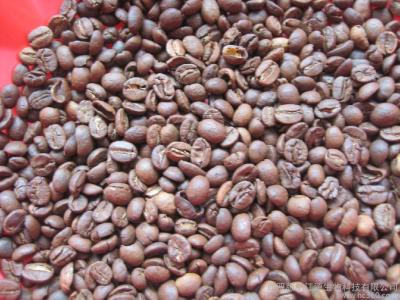The thickness scale of Italian coffee grinder-the thickness of bean grinder powder
The thickness scale of Italian coffee grinder-the thickness of bean grinder powder
Determine the direction of adjustment you need (finer or thicker). Make sure there are enough coffee beans in the warehouse, and the valve between the warehouse and the sharpening knife is opened so that the coffee beans can fall smoothly into the grinding area.
Turn on the grinder for 10 seconds and discard the coffee powder (these are coffee powders that have not been adjusted).
Use the coffee powder to make a cup of coffee to ensure the accuracy of the steps of serving, flattening and pressing powder. The traditional method of making espresso (Ristretto) uses a water / flour ratio of 1:1 (i.e. 18 grams of coffee powder is used to make 18 grams of coffee) or 1:2 (i.e. 18 grams of coffee powder is used to make 36 grams of coffee), while a regular espresso uses a water / powder ratio of 1:2 (i.e., "Normale"). Test the quality of the coffee and the extraction time. Constantly adjust the dial to make the powder reach a perfect thickness.
When the coffee bean enters the grinder, the blade in the grinder will crush the coffee bean into powder. The smaller the distance between the blade and the blade, the smaller the coffee beans will be ground into smaller particles. The finer the grinding particles are, the tighter they are, and the more difficult it is for the water to pass through, thus greatly prolonging the extraction time. On the contrary, if the distance between the blades increases, the ground particles will become rougher, the flow of water will be easier to pass through, and the extraction time will be faster. To take a simple example, like stones and fine sand, water flows much faster through stones than fine sand, because there is more space between the stones for the flow of water to pass quickly. Therefore, correct grinding is very important, and the size of particles directly affects the quality of extraction.
Blade is another common coffee grinder, though not the best, but the most common. This type of grinder is designed to grind well, but blade friction may lead to the burning of some coffee beans. In addition, this approach does not provide the best consistency.
Another type is the disc grinder. It is also divided into two different types, namely, flat wheels and cones. Cones are considered to be the best choice to buy. The speed of the disc grinder is slower than that of the blade. The ground coffee beans are fed into a hopper and brewed into coffee. This method can avoid the burning of coffee beans and ensure consistency. But the only drawback of this bean grinder is that it needs more cleaning, which may take some time. But if you want delicious coffee, this is the best coffee grinder you can buy.

Important Notice :
前街咖啡 FrontStreet Coffee has moved to new addredd:
FrontStreet Coffee Address: 315,Donghua East Road,GuangZhou
Tel:020 38364473
- Prev

The residue box of Delong automatic coffee machine has been emptied. Cleaning steps.
Delong automatic coffee machine residue box has been emptied the use method cleaning step 1, why does the coffee machine need to remove dirt? When we were young, we had some impression that when we boiled water in a kettle, the kettle would gradually be covered with layers of thick white substance, commonly known as water alkali, which actually refers to scale. We can imagine if the scale of those white substances were shaped in the boiler of the coffee machine.
- Next

DeLong coffee machine grinder adjusting grinding degree clogging thickness instruction
Delon coffee machine grinder to adjust the grinding degree of clogging instructions for each unique number, Chinese mainland limited sale of all stainless steel body, stable and distinguished patented automatic cappuccino system: the preparation of pure taste cappuccino coffee, latte coffee and latte macchiato coffee can easily prepare coffee to suit your personal taste at any time. There is a choice of high, middle and low grades. You can try it.
Related
- What is the Philharmonic pressure? How to use Philharmonic pressure to make delicious coffee
- Why does a hand grinder have more fine powder than an electric grinder?
- In addition to the hot mom, what is the difference between the versions of EK43 | ditting and Mahdi ek43?
- What kind of equipment do you need to make coffee by hand? Introduction to novice starter cooking equipment tools
- Espresso needs to be ground how thick and thin scale entry Italian Coffee Machine Bean Grinder investigation and Grinding course
- How much does it cost to open a small private cafe? How much does it cost to learn coffee? How to operate it?
- The difference between the flavor characteristics of hand-brewed coffee and coffee maker is hand-brewed coffee really better than coffee maker? Can I use a coffee machine to make coffee beans by hand?
- The difference between 01 and 02 of hario v60 filter cup what is the difference between 01 and 02 filter cup opening and cooking flavor
- What's the difference between the smart cup and the French kettle? Which is better, the French kettle or the Smart Cup?
- What's the difference between a smart cup and a V60 filter cup? The difference between the taste of smart cup and hand-brewed coffee

